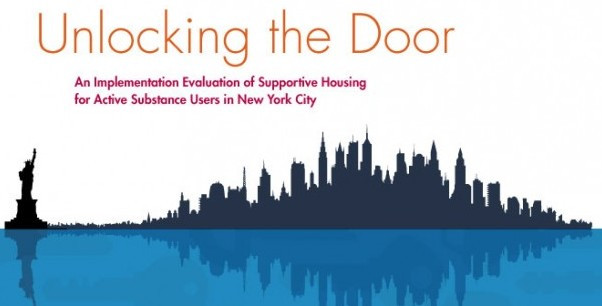Today CSH and CASA Columbia have released the second project paper from CASAHOPESM (Housing Opportunities Program Evaluation). This unique joint paper is designed specifically for a policy audience, particularly government and housing organization administrators who are considering creating similar programs in other parts of the country.
Unlocking the Door: An Implementation Evaluation of Supportive Housing for Active Substance Users in New York City presents the findings from our implementation evaluation of scattered-site supportive housing for New York/New York III’s Population E (500 chronically homeless single adults for whom substance use is a primary barrier to independent living).
This paper provides:
-
An overview of the New York/New York III Agreement and Population E;
-
A summary of the motivation and objectives behind this supportive housing, as well as its development and structure;
-
An assessment of actual program implementation compared to the implementation goals of the initiative’s original stakeholders;
-
The lessons learned, challenges, and promising practices that emerged during the first three years of operation; and
-
Conclusions and recommendations for future publically-funded initiatives designed for housing actively substance using homeless persons without serious mental illness.
We have created two versions of this paper; a brief 12 page summary and a full 80 page report that will be available for download at the beginning of April.
CASAHOPESM is an evaluation funded by the Conrad N. Hilton Foundation to study whether or not New York/New York III’s supportive housing for Population E is effective in improving lives and saving taxpayer dollars. CASAHOPESM is part of CASA Columbia’s Health and Treatment Research and Analysis Division. Upcoming papers will present 12-month tenant outcomes as well as results of a cost-effectiveness analysis using administrative data to investigate service utilization.

